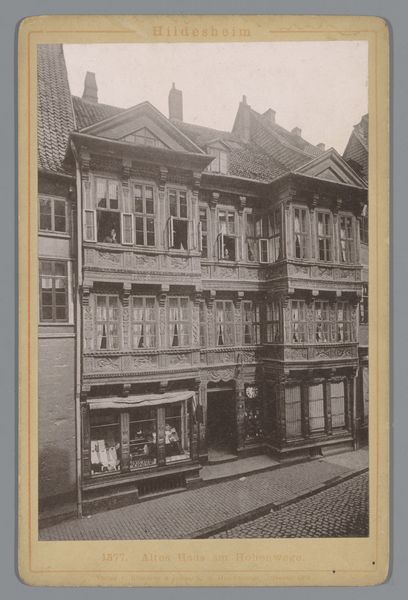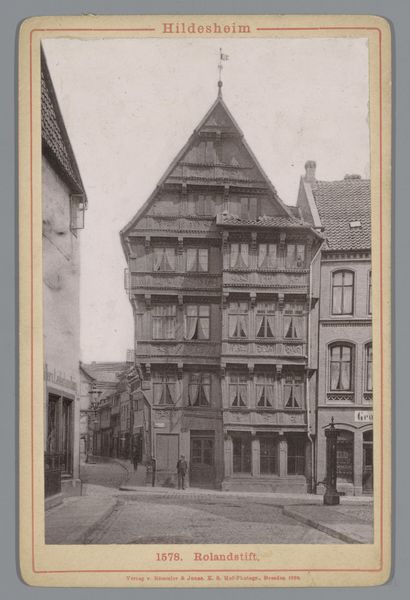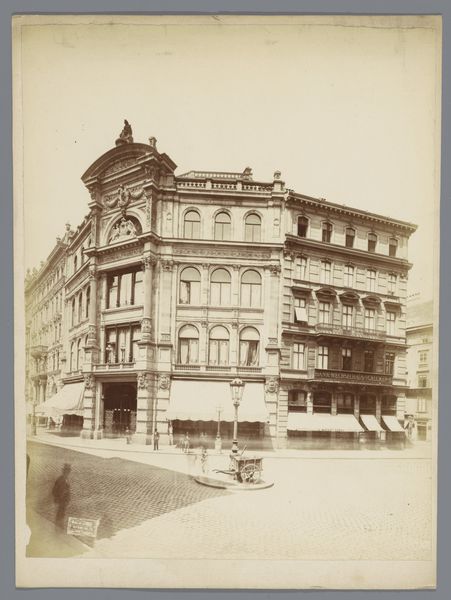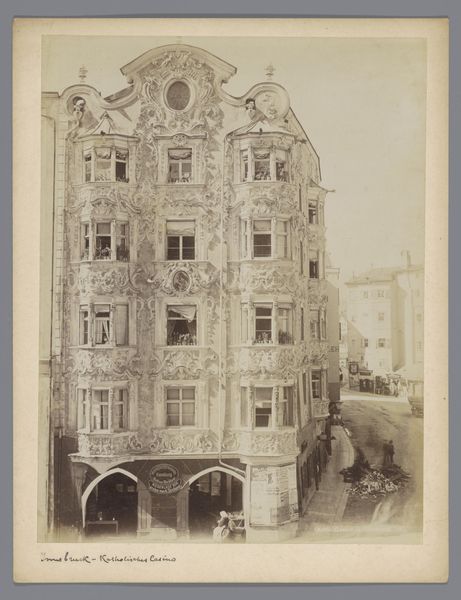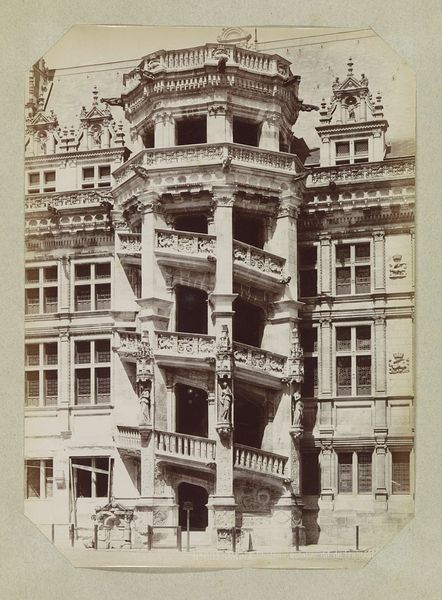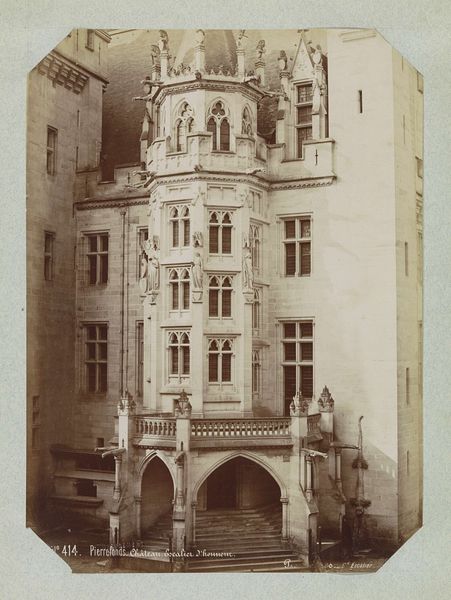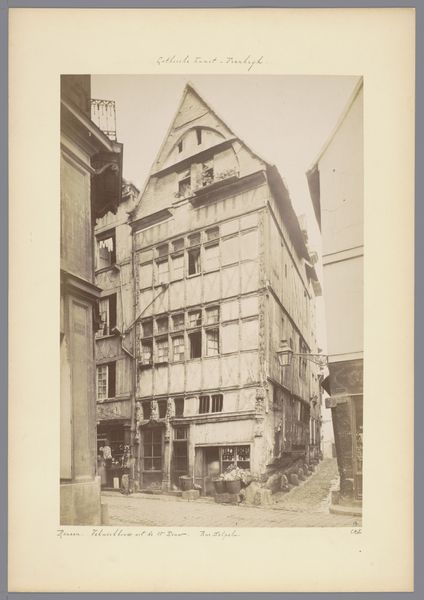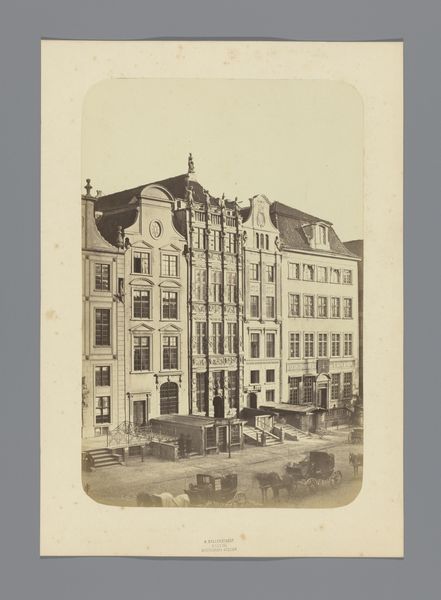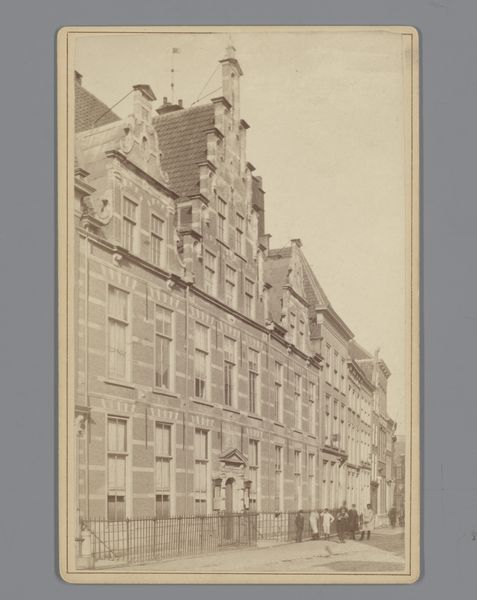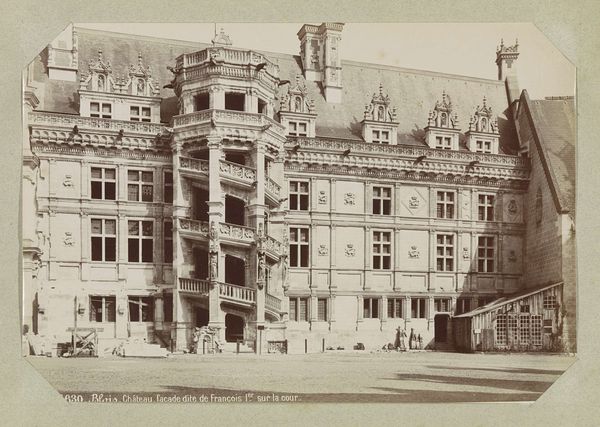
print, photography, architecture
# print
#
landscape
#
photography
#
cityscape
#
architecture
Dimensions: height 99 mm, width 62 mm
Copyright: Rijks Museum: Open Domain
Curator: The ornate spiral staircase, as captured in this albumen print by Mèdéric Mieusement between 1862 and 1885, showcases an impressive exterior view from the Château de Blois in France. It's currently held at the Rijksmuseum. Editor: It feels theatrical. The staircase rising outside the building looks like a stage setting. Almost as if inviting figures to perform stories upon it. Curator: Exactly, and in thinking about this space as a "stage," what historical performances might we imagine unfolding here? The Château de Blois has been home to powerful figures involved in complex socio-political machinations across centuries of French history. Editor: The intricate stonework practically drips with symbolic motifs. Notice the salamander, the emblem of Francis I, repeated along the façade. A salamander was thought to be able to live in and control fire, thus projecting images of strength, protection, and even invincibility onto the royal person. Curator: And thinking of that symbolism of power, the Château de Blois also reminds us of some pretty serious issues involving religious persecution and political violence. Editor: This image offers us not only the representation of architecture but an emblem that encapsulates the intersection of identity and ideology reflected in cultural history. How interesting that, through the photograph's perspective, we become voyeurs into history and time. Curator: Absolutely, that history—seen in the built environment and its motifs—speaks volumes about societal dynamics of power, identity, and collective memory. Looking at this, it feels vital to remember the stakes for everyday people wrapped up in elite power plays. Editor: It's a strong reminder that symbolism exists to speak—but that it always represents selected, tailored narratives that are always important to decipher.
Comments
No comments
Be the first to comment and join the conversation on the ultimate creative platform.

